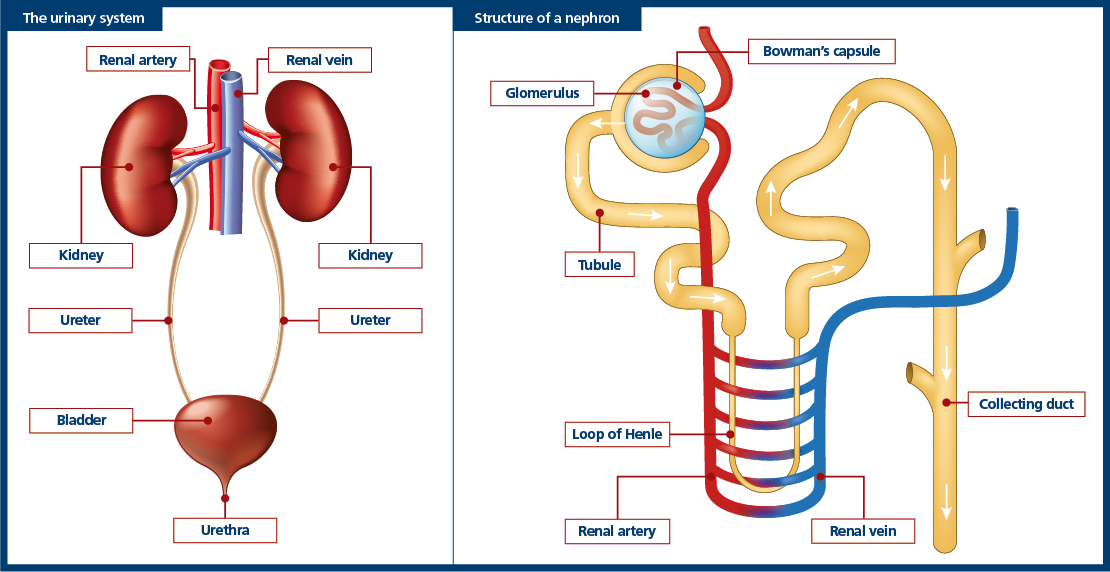The urinary tract is very much taken for granted, but this body system is surprisingly complicated. Its main role is to get rid of excess water and waste material from the body, and it also has a vital function in regulating blood volume and red blood cell production.

There are two main organs involved: the kidneys, which filter the blood and create urine, and the bladder, which stores this waste liquid until it is excreted. Each kidney is connected to the bladder via a tube called a ureter, with another tube called the urethra running from the bladder to outside the body.
Blood is brought to the kidneys via the renal artery, which branches off from the aorta. It is filtered via nephrons, of which there are over a million per kidney. This filtration removes waste and excess substances, including water, from the blood, resulting in the production of urine. The purified blood is transported away via the renal vein, which feeds into the vena cava and goes to the heart. The word “renal” means “relating to the kidneys”, much as the term “cardiac” is associated with the heart.
Nephrons are small but mighty. The first part of this complicated structure is the Bowman’s capsule, which surrounds a bundle of capillaries called the glomerulus and is the place where ultrafiltration – movement of water, salts, glucose and other substances into the bloodstream – takes place. Descending from the Bowman’s capsule is the tubule which bends at the loop of Henle and ascends before forming the collecting duct, where urine is formed.
The bladder is a hollow muscular organ, able to expand to hold large quantities of urine. It is supported and kept closed by the pelvic floor muscles and has two sphincter muscles: an internal one that holds the bladder neck in place, and an external one that acts like a tap, with both needing to relax in order to allow urine into the urethra. The walls of the bladder contain stretch receptors, which send a signal to the brain when it is around half full, indicating that it needs to be emptied.
